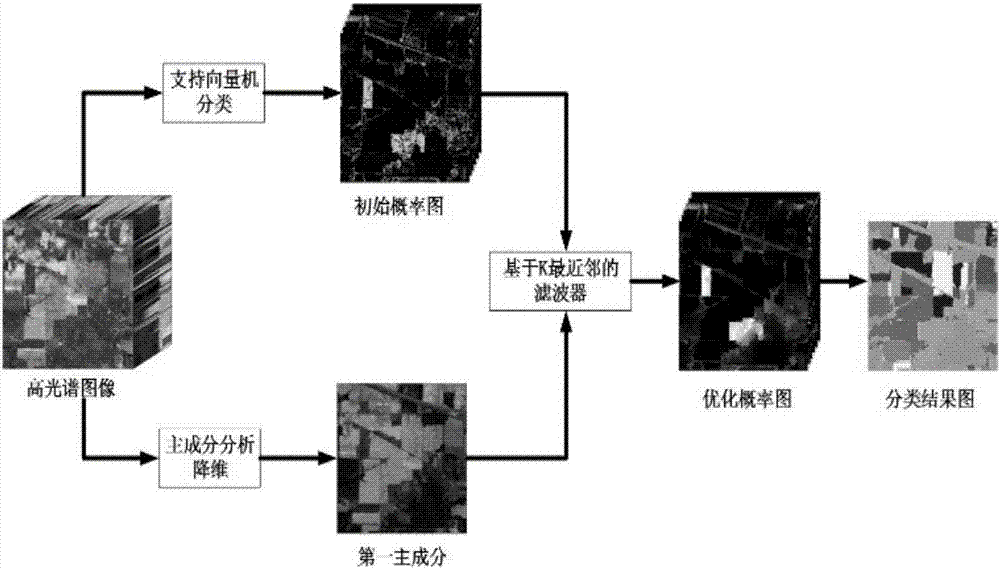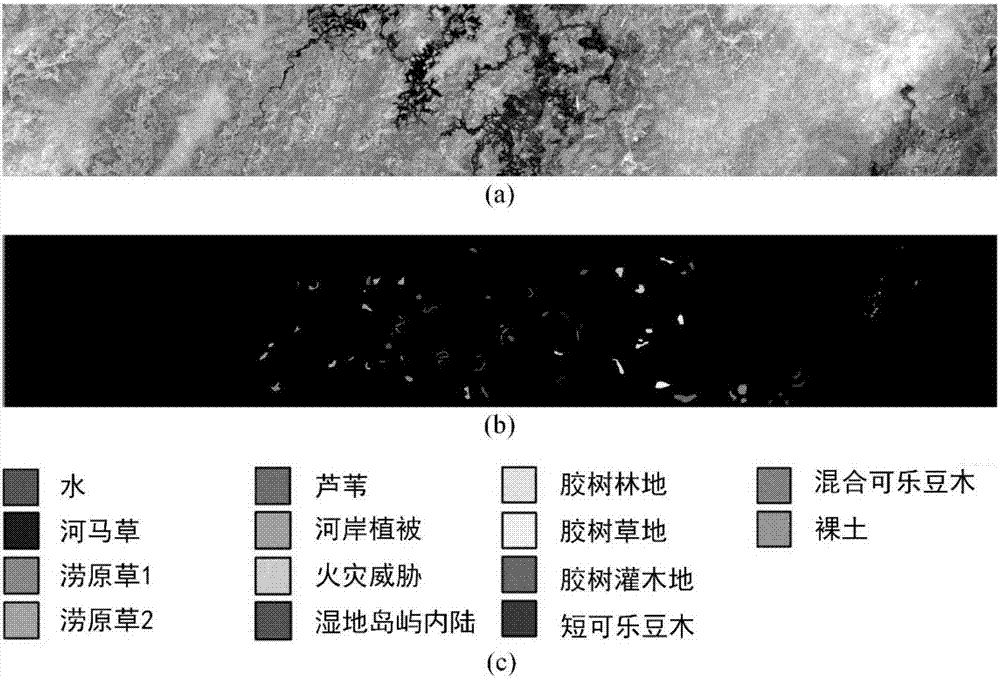Hyperspectral image classification method based on K nearest neighbor filtering
A technology for hyperspectral image and hyperspectral classification, applied in the field of hyperspectral classification based on K nearest neighbor filtering, can solve the problem that the spatial spectrum classification method of hyperspectral images cannot classify global spatial information and is slow, and achieves fast speed and good classification. , the effect of improving the accuracy
- Summary
- Abstract
- Description
- Claims
- Application Information
AI Technical Summary
Problems solved by technology
Method used
Image
Examples
Embodiment Construction
[0053] The following will clearly and completely describe the technical solutions in the embodiments of the present invention with reference to the accompanying drawings in the embodiments of the present invention. Obviously, the described embodiments are only some of the embodiments of the present invention, not all of them. Based on the embodiments of the present invention, all other embodiments obtained by persons of ordinary skill in the art without making creative efforts belong to the protection scope of the present invention.
[0054] The two hyperspectral images used in the present invention are the Indian pine image (IndiaP) and the Botswana grassland wetland vegetation image (Botswana). Such as figure 2 As shown, the Indian pine image (IndiaP) covers the forest area and the mixed agricultural area, and the corn field and the soybean field account for most of the area. It contains 16 categories with a size of 145×145 pixels and a spatial resolution of 20m per pixel. ...
PUM
 Login to View More
Login to View More Abstract
Description
Claims
Application Information
 Login to View More
Login to View More - R&D
- Intellectual Property
- Life Sciences
- Materials
- Tech Scout
- Unparalleled Data Quality
- Higher Quality Content
- 60% Fewer Hallucinations
Browse by: Latest US Patents, China's latest patents, Technical Efficacy Thesaurus, Application Domain, Technology Topic, Popular Technical Reports.
© 2025 PatSnap. All rights reserved.Legal|Privacy policy|Modern Slavery Act Transparency Statement|Sitemap|About US| Contact US: help@patsnap.com



